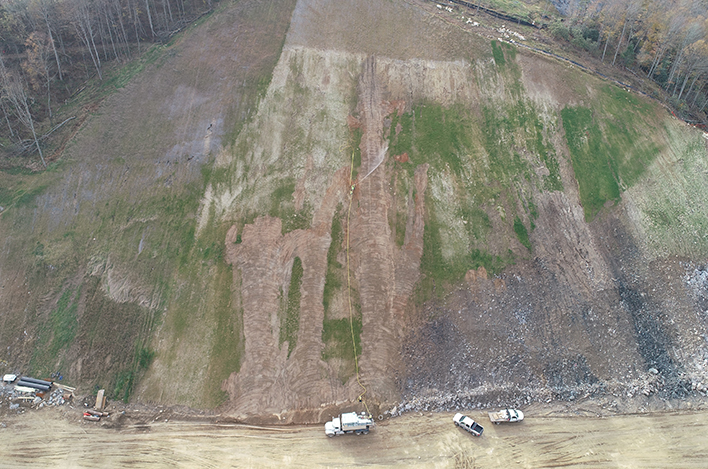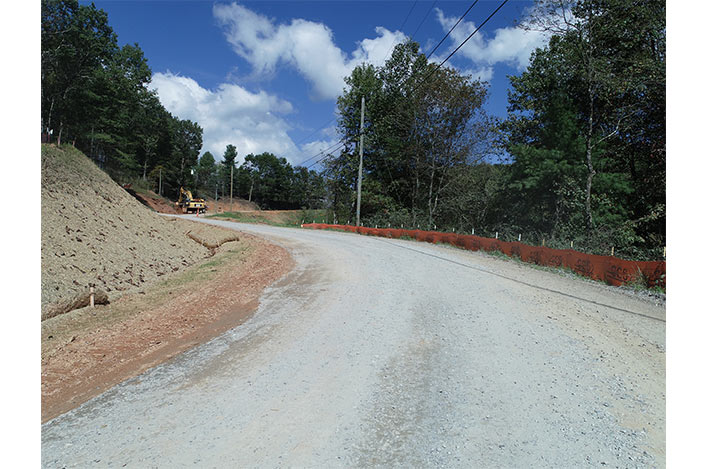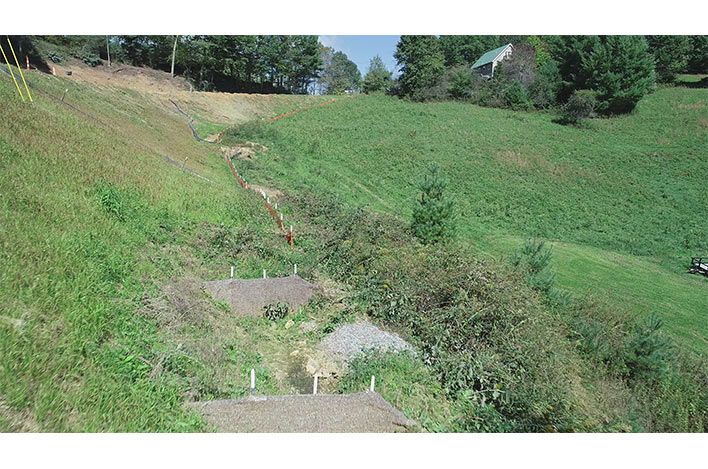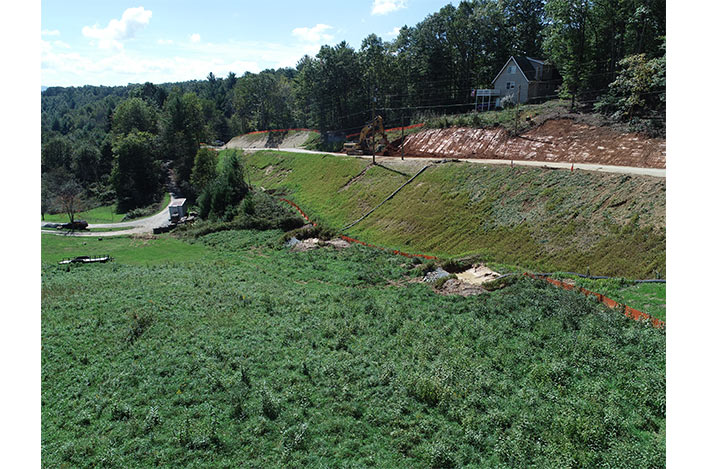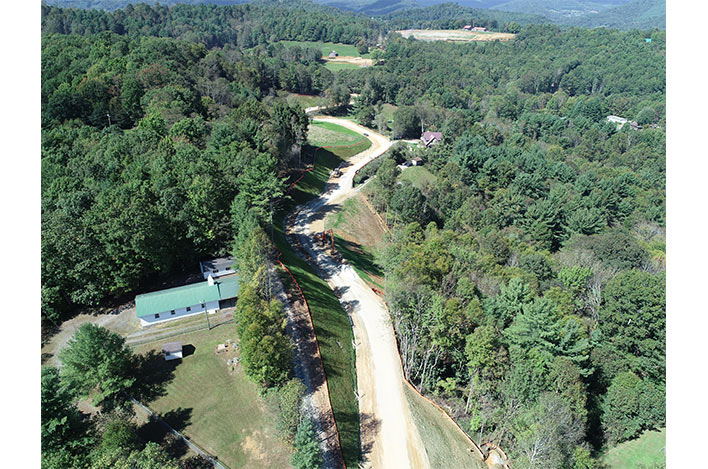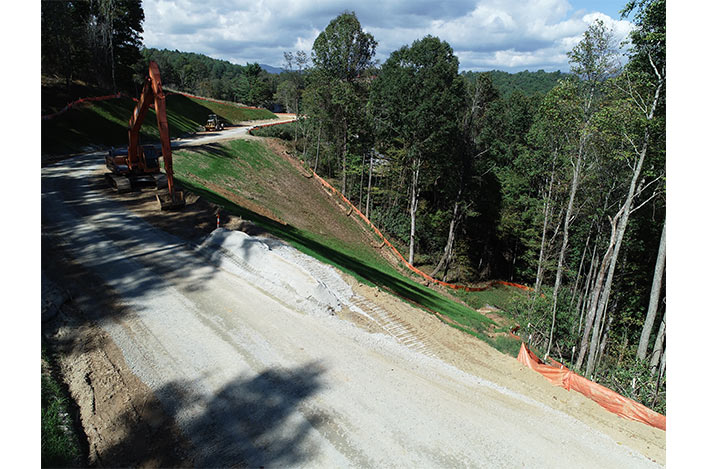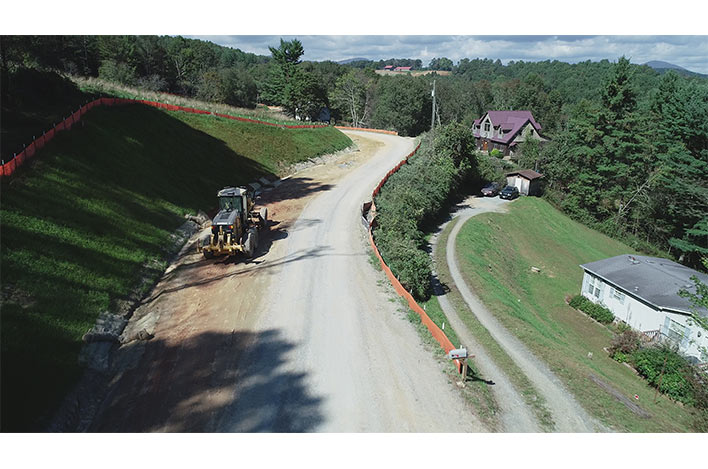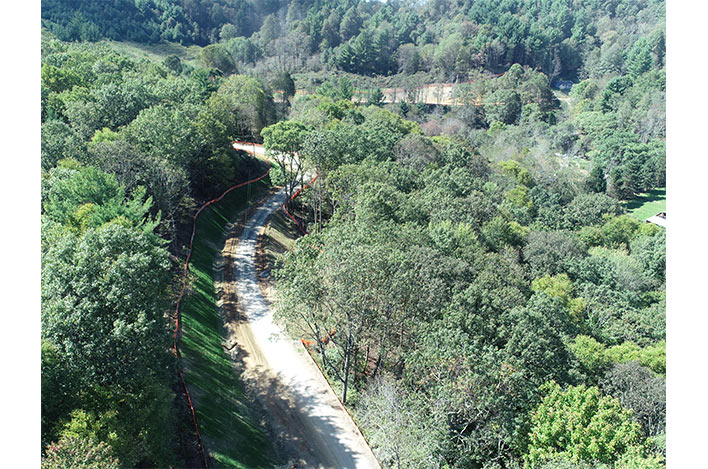Hydroseeding
Hydroseeding, the most efficient way to cover large areas when replanting grass, is also referred to as hydraulic mulch seeding, hydro-mulching, and hydraseeding. It is frequently used as an erosion control technique on construction sites and along roadways as well as to reseed swaths of land impacted by fire. It is particularly useful on steep hills and highly erosive slopes.
With hydroseeding, the seed is spread in a mixture with water and fertilizer via a hose under high pressure. The entire process is much more involved, as there is ground preparation that must happen first, and additional measures to ensure optimal seed growth after application. Central Carolina Seeding has perfected the process (and all steps involved), which has proven to yield good and consistent results.
The Best Method
Hydroseeding is a superior alternative to traditional dry seed sowing and broadcasting of seed for many reasons. First, when applying, the typically green or bluish color of the slurry makes it easily apparent which areas have already been sprayed—preventing unnecessary overlap or missed spots. Second, the fertilizer, tackifier, and straw mulch all act to protect the fragile seed from intense sunlight and animals eating and disturbing the seed as well as rain and wind moving the seed to other areas. Finally, as the straw decomposes, it naturally releases a wide range of nutrients that further aid the seeds' growth.
Our Four-Step Process
Central Carolina Seeding’s hydroseeding service follows a four-step process, which follows:
• We first prepare the soil on the site, ensuring that the newly planted seeds will have the optimum environment in which to take root and grow.
• Next, we combine fertilizer, water, and grass seed into a slurry and spray the mixture through pressurized equipment onto the land. This procedure is incredibly efficient as it provides coverage over vast areas in a very rapid time frame with little manual labor involved.
• Then, we cover the seeded area with straw to protect the seed against birds, intense sunlight, rain, soil erosion, and wind.
• Last, after the straw has been spread, it is "tacked." This process coats the straw adding density and strengthening the straw's bond to the ground while also serving to extend the functionality of the straw—preventing it from blowing or washing away. We spray biodegradable hydro-mulch (wood/paper tack), or depending on the needs of the particular job, we may spread emulsified asphalt.
Asphalt forms a light coating on the mulch, holding it in place while seeds germinate, which is particularly useful on steep slopes prone to erosion or in high wind regions. The dark color of asphalt is also beneficial to the seeds since it absorbs sunlight and heat, which in addition to its tendency to hold moisture in the soil, is essential for seed germination. All in all, emulsified asphalt is a preferred choice for promoting speedy growth in difficult areas. Whether asphalt or hydro-mulch is required will be determined by our engineers and the job itself. Both meet the specifications of the NCDOT.
The Right Equipment for the Job
Not all seeding equipment is made the same, and having the right equipment is critical to successful application. Central Carolina Seeding has the best fleet of hydroseeding equipment available to provide this essential service. Our fleet of tank-mounted trucks are the largest hydroseeders manufactured today. They are equipped with 1,700-3,000 gallon tanks, specialized pumps, and use a continuous agitation system.
For spreading tack, we have a Tornado Tack ST-1000 Tackifier that doubles the coverage area provided by traditional machines, offering up to four acres of coverage per 3,000-gallon tank. This minimizes the time spent off-site reloading and lets us get the job done much faster.
For spreading emulsified asphalt, we have our Tack Truck or Tack Buggy to handle every situation.


